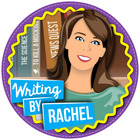 |
As a first-year teacher, I simply asked students to
write one page about anything they’d like—a personal narrative from
their summer, a creative piece. But that seemed inadequate unless this
was to remain a one-off assignment. I wanted it to fit into a program
that developed writers. Ultimately, I wanted students to learn and to
apply habits of thinking about writing, as well to master writing
skills. So, back to the drawing board.
Next time, I merged my desire to integrate art into my curriculum. On the first day of class, I showed students a painting and asked them to share their observations and their questions about it.

We began with pure observations:
*What did they see?
*What words would they use to describe it?
*What is the tone of the painting?
*What stood out?
*What details did they see?
*What was going on—what was the action?
*Where were the gaps—the pieces the painting did not provide?
*What questions did they have?
Then we added our own interpretations:
*If this painting were a story, what genre would it be?
*What story did this painting tell?
*What character was not shown but was there and what would he/she report?
*Was there a conflict?
*What was the setting? What was the tone? How did this piece make them feel?
*What happened in the moment before this painting’s scene, or in the days after?
*What connections did they make between the painting and their own lives?
Our conversation not only primed the pump for writing, it introduced how to think like a writer, and it developed skills students could use to read other primary source documents.
After our conversation, I turned students loose to write, no more than one page front and back, that was inspired by the painting. The writings that were born from this conversation were rich and varied—mysteries, personal narratives, dramatic conversations, and scientific-style observations. They indicated where there was work to be done--grammatical weaknesses, structural challenges—but also where there were creative fields to be mined. From the very first day of class, I had student samples to use in class and a snap-shot of students’ writing skills, and they had a rough draft to work with.
These writing from art days—creARTive writing—became a staple of the class. They were something worthwhile to fill the days in-between units, a way to connect literature to art, a way to inspire student writing during each unit, and always, a source of information about their writing skills.
What always astounded me was how energetic our conversations were, how quiet the room became while they wrote, and how much I looked forward to reading the mosaic of their creations.
And so, I share with you a creARTive writing assignment. It has a place in every English class.
 |
| Refresh your writing prompts! creARTive writing is a unique way to
integrate art and to inspire creative writing. Try out the Freebie. Students will create an
original writing from a work of art. |
 |
| Looking for a more? Try a bundle of five creARTive writing prompts. |

No comments:
Post a Comment